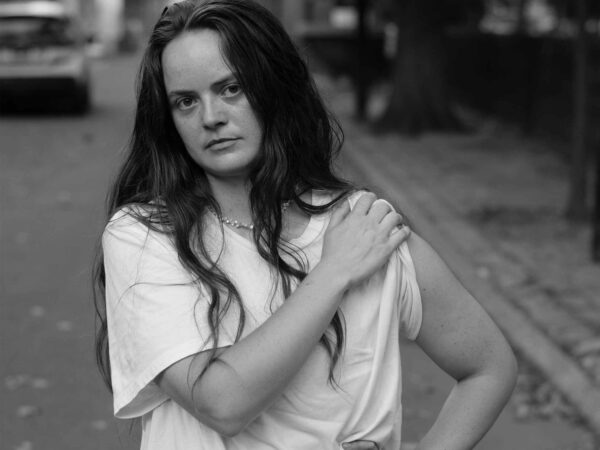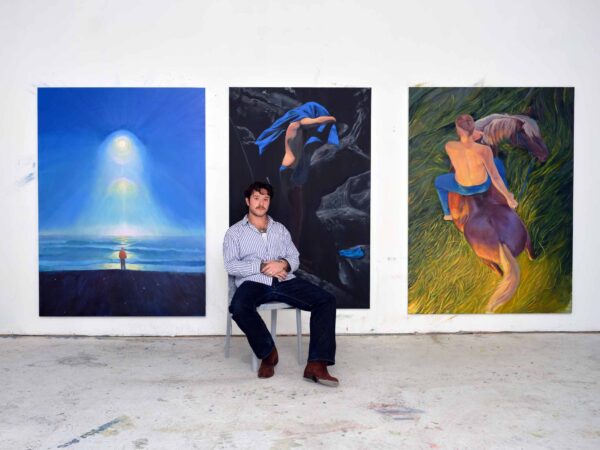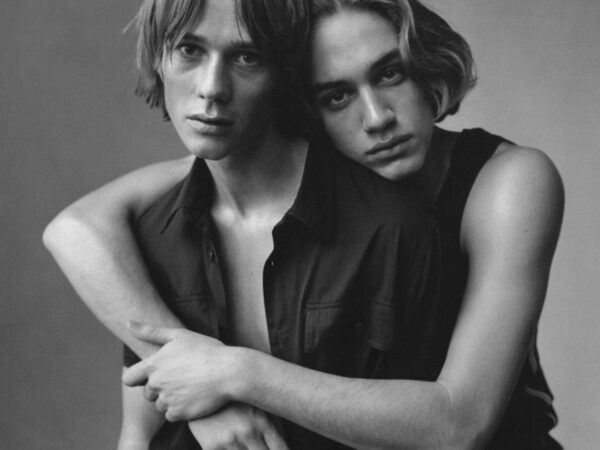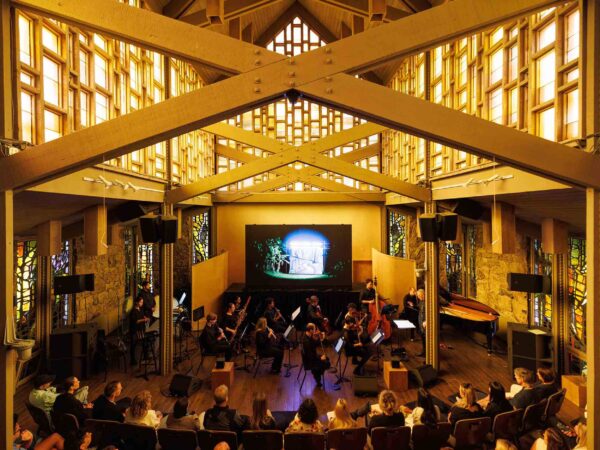
For a performance piece at the Outsider Art Fair Paris, Michèle Lamy created a live zine with Polaroids and a photocopier.
It’s a sunny Sunday afternoon in Paris and Michèle Lamy is lying on a concrete sidewalk, smoking a cigarette. But not without a crowd, of course, and a photographer surrounding her. In fact, there’s even a photocopy machine involved in this performance piece, which kicked off Sunday as part of the Outsider Art Fair Paris, which specializes in art brut or outsider art—in other words, self-taught art by someone who practices outside of the establishment. At this year’s fair, Lamy curated a performance series featuring a tour of the art fair by English performance artist David Hoyle, and a live zine creation with a photocopier. The Paris-based artist, designer, and creative who is widely known as the partner of Rick Owens, partakes in the zine as the subject, which is made in collaboration with Paul Kooiker, the Dutch photographer who collaborated on a zine with Owens featuring his collaboration with Birkenstock. Here, Lamy posed for Kooiker, who shot her with a Polaroid camera, then photocopied the photos for a limited edition of 10 zines. Lamy spoke to Document after the performance about the importance of art brut, zine culture, and why she never gets tired.
Nadja Sayej—You were just photographed by Paul Kooiker with a Polaroid, do you become someone else when you’re being photographed, or are you just yourself?
Michèle Lamy—I like it when I’m just being myself. I was lying outside on the concrete for the photos, but that doesn’t bother me because I am working with someone I know. That said, I like participating in something when I don’t know exactly what I’m going to do, or what the outcome is going to be. I’m open to it when I trust the person and I like them.
“Art brut is a way of thinking. There is a feeling of beginning something fresh and important.”
Nadja—What is the importance of art brut to you?
Michèle—Jean Dubuffet, who helped define art brut, his work is in the Pompidou. I love the installation he has there called Le jardin d’hiver, from 1968. I like to go sit there, that’s the image I have of art brut in my mind. It’s simple but self-expressive. It’s about not belonging to trends or the mainstream. It’s to participate, though, it’s a nice way to still go about art-making. With the Outsider Art Fair, I say, We belong here, in a way. There is some kind of overdose of grandiosity of conceptual art. I think this is something we are going to continue.
Nadja—Can you give an example?
Michèle—Art brut is a way of thinking. There is a feeling of beginning something fresh and important. When you think of outsider art, there is a lot of it. What is amazing is the art is often completely full, it’s frenetic. It’s not minimalist, it’s maximalist.
Nadja—What inspires you to collaborate with people?
Michèle—The history and relationship that’s there between us—the story. And we figure out what we want to do instantly. I have always loved outsider art and wanted to take part in a performance like this.
Nadja—This piece is based around zine culture, but we live in digital times where print has a different impact—I mean, where do you even get a photocopier?
Michèle—That was a long process, it’s a long story.
Nadja—What does it mean today, the zine? It’s a relic today, in a way. Is zine culture disappearing?
Michèle—Well, I have an opposite feeling, even though I am on Instagram. I think there are a lot of more interesting magazines and zines coming out, something you would buy. There is always a flipside, don’t you think?
“I only get tired if I don’t move.”
Nadja—Are you a self-taught artist?
Michèle—Well, yes. And you always have to think, what is an outsider artist, or not? It’s not because they don’t want to be outside of something, it’s just about understanding the person. For me to collaborate with someone, it’s always a story with people. I imagine this project as a story. I think of my life as 1,001 nights and if I don’t have any story I am going to be [makes blunt sound].
Nadja—You seem to always be busy, even for a woman at 74. Do you ever get tired?
Michèle—No, not at all. I like to keep moving. I only get tired if I don’t move.



















